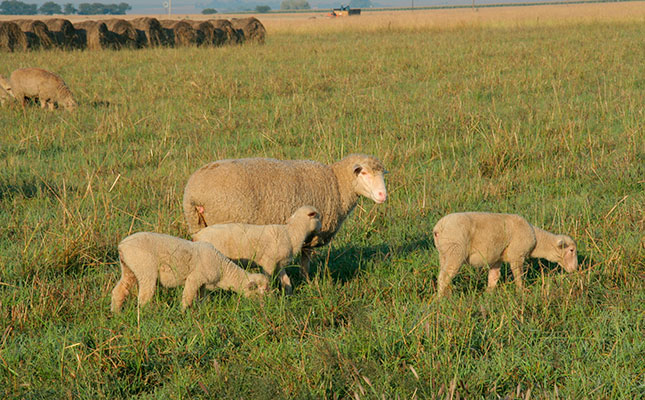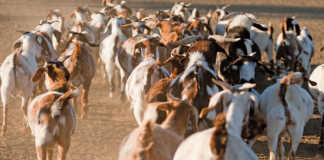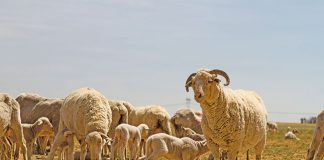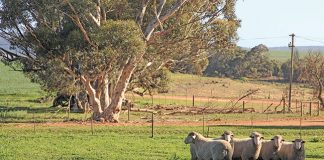
The nutrition of the ewe plays a key role in producing strong, healthy lambs with a high growth rate, good feed conversion efficiency and a low mortality rate. As with the ewe, the lamb’s growth potential is genetically determined, while the degree to which this potential is reached depends on environmental conditions. In this regard, nutrition is probably the most significant and manageable factor.
It has been established that early colostrum consumption and sufficient milk produce good quality lambs with a high weaning percentage. In addition to abundant maternal milk production, the farmer has other options to directly improve the nutritional status of the lamb. From about seven days after birth, a lamb can be introduced to creep feed. Good creep feed is highly palatable and formulated with quality components. Since a lamb is an efficient feed converter, the results justify the cost of this type of feed.
After a month, creep feed can supply about half of a lamb’s total feed requirements.
Weaning
Lambs that are given creep feed will typically be 10% to 20% heavier at weaning than conventionally reared lambs, and will reach the required marketable weight much sooner. At the standard weaning age of 120 days, these lambs can be marketed directly from the farm. Alternatively, they can be weaned earlier – when they reach the optimal weaning weight of about 25kg at eight to nine weeks.
After weaning, lambs can either be selected for the breeding flock, based on breed standards and other selection criteria, or they can be prepared for marketing. There are various options available for lambs destined for the market. When the price of weaned lambs is high, they can be marketed to feedlots at weaning to reduce the number of sheep on the farm.
Adding value
Modern farms diversify as a strategy to reduce risk. This would typically include value-adding before the animal leaves the farm. With lambs, the popular value-adding option is to produce marketable animals on veld or pasture, using limited feed supplements, or to finish them on maize stover or in a feedlot.
Finishing weaned lambs on good quality green pasture is an economical alternative to expensive grain and concentrate-based feedlots. A pasture-based finishing system can rear lambs at a slightly heavier slaughter weight without adversely affecting the carcass grade. Compared with a feedlot, pasture systems optimise infrastructure such as camps, and reduce by half the amount of concentrate needed to attain slaughter weight.
Green pasture may be palatable and of good quality, but it has limitations such as low energy and micro-element deficiency. For this reason, pastures alone cannot sustain high growth rates. Lambs will respond positively to nutrient supplementation and growth stimulation implants. The supplement formulation on green pasture should complement the forage and not be used as a substitute.
The lick consists of a grain fraction, a natural protein fraction supplying bypass protein, and essential amino acids, and micro-elements and vitamins. A growth rate of 300g/day can be achieved, depending on the quality of the forage and supplementary feed. The better the forage quality, the better the growth response of the lambs.
Maize stover
In grain cropping areas, maize stover or unharvested maize (weimielies) makes a good base feed to finish lambs or over-winter sheep. The energy content of newly harvested maize can be very high, especially when a lot of grain falls on the ground during harvesting.
Sheep are selective grazers and will find these maize kernels. If they are not adapted to the high carbohydrate intake, they will develop acidosis. This is the main limitation of maize residue and it highlights the importance of a sound adaptation programme. Adapt the sheep to the maize lands either by limiting the daily grazing time, or by gradually increasing the amount of maize fed to lambs before they go onto the maize lands.
Another limitation is the poor nutritional value of grain crops and stover, with insufficient protein and calcium, and a distorted Ca:P ratio. To optimally utilise weimielies for finishing lambs, address the nutrient limitations by providing the correct lick containing buffers and ionophores to manage the acidosis risk.
Correct the limited protein and mineral content of stover or maize on the land by providing a supplement containing good quality natural protein and mineral and vitamin premixes. Lick must be freely available, but monitor its consumption to ensure sufficient buffer and ionophore intake. An unharvested grain crop with good quality lick adds value to the lambs, as well as to the grain.
Feedlot finishing
The final option for finishing lambs is the feedlot. This practice, which adds as much value to the carcass as possible in a short period, has gained popularity in recent decades. A sheep feedlot can be a profitable operation on a diversified farm, but the expertise and management needed is not as simple as for a beef feedlot. Three important aspects will determine a sheep feedlot’s success. The first is the need to successfully adapt the lambs to the feedlot diet through a strict programme that includes feed additives to facilitate adaptation if necessary. Adaptation is often the ‘make or break’ phase.
Secondly, it is important to consider the type and quality of lambs for the feedlot. Not all breeds or types of sheep perform equally well in this environment. Factors to consider include age, hybrid vigour, using intact males (cryptorchidism), and meat-type versus wool-type sheep.
Finally, the type and quality of feedlot ration is crucial. With a low margin above feed price, it’s necessary to minimise the feed cost per unit gained in the feedlot. There are various nutritional strategies to improve the quality of lambs produced for the slaughter market. The input costs and profitability of each is different and a farmer must consider many factors when deciding on the best system for his particular conditions. In the end, sound management input and creative know-how will result in a successful operation.
Dr Francois van de Vyver is a technical manager at Voermol Feeds. Phone him on 032 439 5879, or email [email protected].













